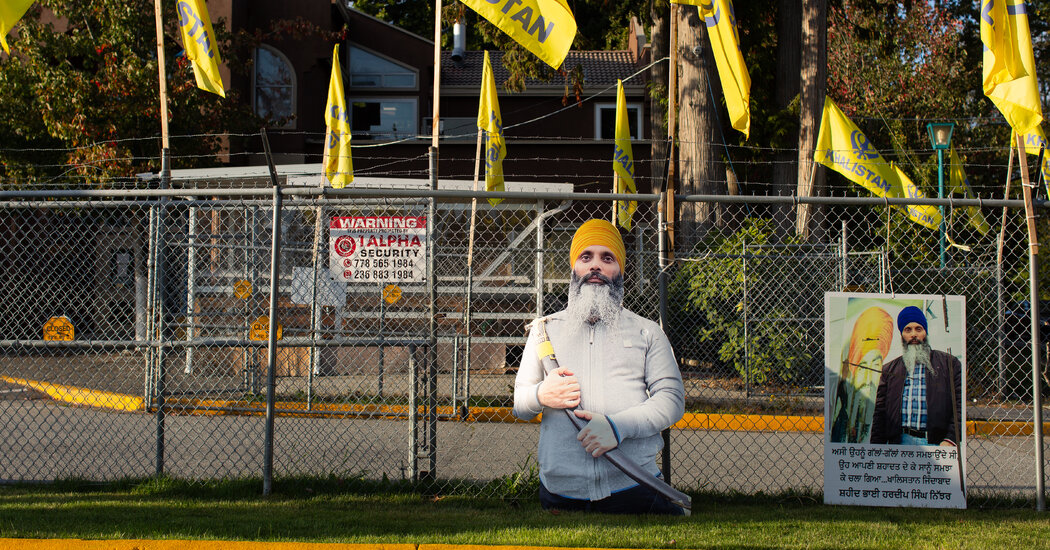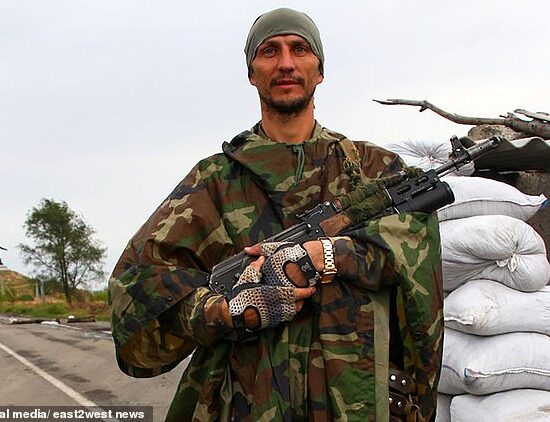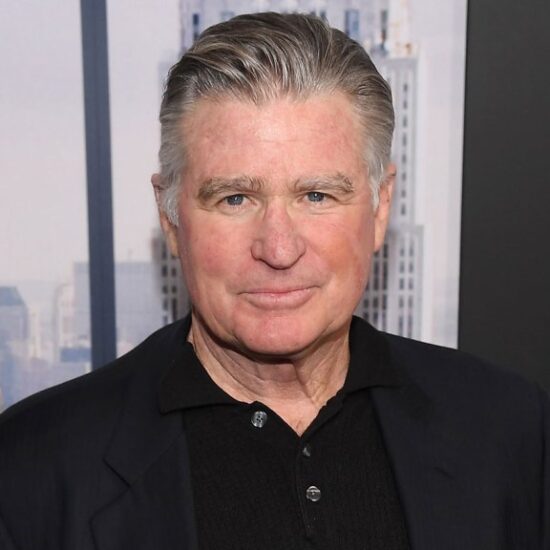
The Sikh temple leader wanted as a terrorist by India walked toward his pickup truck late one Sunday last June after a long day at his place of worship. He and an associate discussed some upcoming programs while making their way across the large parking lot behind the Guru Nanak Sikh Gurdwara temple near Vancouver.
It was Father’s Day and, once inside his gray Dodge Ram, the leader, Hardeep Singh Nijjar, called his family and said he was heading right home. But he had barely reached the parking lot’s exit when, according to temple officials who have watched the temple’s security video, a white vehicle suddenly blocked him. Then, witnesses say, they heard a burst of automatic gunfire and saw two hooded men running away from Mr. Nijjar’s immobilized pickup.
“It went on for about 10 seconds,” said one witness, Bhupinder Jit Singh, a temple member who was playing soccer in a field next to the parking lot.
Running, Mr. Singh was the first to reach the Dodge Ram, where he found a still-buckled Mr. Nijjar slumped over the center console, his right arm stretched out toward the passenger seat. Bullets had pierced his arms, chest, shoulders and head, spattering blood across his white and light purple shirt. His blue turban was hanging off the right side of his head.
“He didn’t seem to be breathing,” Mr. Singh, 29, recalled.
The violent, professional-style killing of Mr. Nijjar now lies at the center of a diplomatic clash between Canada and India that comes just as Western allies have been trying to strengthen ties with the Indian government of Prime Minister Narendra Modi.
Interviews with three witnesses to the killing and descriptions of the security footage showing the moments leading up to the shooting provide details about the gunmen whom Prime Minister Justin Trudeau of Canada has branded as “agents” of the Indian government.
The gunmen were dressed in black, with hoods over their heads and black medical masks covering their faces, and one of them dropped a blue medical glove that was later recovered by the police, according to the witnesses. They fired anywhere from 30 to 50 shots at their victim, the witnesses said.
Supporting Canada’s charge that India was involved is intelligence, including the intercepted communications of Indian diplomats in Canada indicating their involvement in the plot, according to Western allied officials. India has denied the charges.
Now, the brazen killing threatens to upend not only Canada’s relationship with India, but President Biden’s efforts to court India as a counterweight to Russia and China.
The Canadian government has said that the killing was orchestrated by the Indian government, which had labeled Mr. Nijjar, a Canadian citizen and a prominent advocate for Sikh separatism in India, a terrorist in 2020 and called for his arrest.
The CBC, which is owned by the federal government, reported that “when pressed behind closed doors, no Indian official has denied the bombshell allegation at the core of this case — that there is evidence to suggest Indian government involvement in the assassination of a Canadian citizen on Canadian soil.”
The Canadian government has declined to release details of the intelligence, saying it did not want to prejudice the investigation. But a Canadian government official and Western allied officials said the intelligence had been gathered by multiple countries.
Canada is a member of the so-called Five Eyes, an alliance that shares intelligence information and also includes the United States, Britain, Australia and New Zealand.
In the aftermath of the killing, U.S. intelligence agencies offered their Canadian counterparts context that helped Canada conclude that India had been involved, according to allied officials. Yet what appears to be the “smoking gun,” the intercepted communications of Indian diplomats, was gathered by Canadian officials, allied officials said.
At the center of the dispute between Canada and India is Mr. Nijjar, who was 45 when he died. Mr. Nijjar moved to Canada in 1997 after living through more than a decade of deadly conflicts between the Indian government and Sikh separatists in India.
He was one of countless Sikhs to flee India for Canada, which is now home to about 770,000, the largest Sikh community outside India. Mr. Nijjar eventually settled in Surrey, British Columbia, which is home to one of Canada’s largest Sikh populations, and where he ran a plumbing business and lived with his wife and two adult sons.
Mr. Nijjar had long championed the creation of an independent Sikh homeland — carved out of India’s Punjab region — that would be called Khalistan. His advocacy and influence rose to a new level in 2019, when he became the president of the Guru Nanak Sikh Gurdwara temple, the oldest, largest and most politically powerful of the dozen or so Sikh temples in Surrey.
Mr. Nijjar used the temple as a platform from which to openly criticize the Hindu-led Indian government’s treatment of its Sikh minority. In 2020, the Indian government declared him a terrorist, and accused him of plotting an attack in India and of leading a terrorist group.
Mr. Nijjar denied those charges. His allies said they were meant to discredit him and undermine their movement. They believe his advocacy led to his killing on June 18.
That morning, Mr. Nijjar had been in a good spirits as he was getting ready to leave home for the temple, recalled his elder son, Balraj Singh Nijjar, 21. Balraj Nijjar and his younger brother had given their father a pair of jeans as a Father’s Day gift. Mr. Nijjar, who had a sweet tooth and was trying to lose weight, joked that his sons should have picked a smaller size.
“That would encourage him to diet,” Balraj Nijjar recalled.
At the temple, Mr. Nijjar spent the day tending to business and speaking to congregants.
“I spent the whole day with him — we had lunch and tea together,” said Gurmeet Singh Toor, 52, a temple official who had been friends with Mr. Nijjar for the past nine years.
Around 8:30 p.m., Mr. Toor recalled, he and Mr. Nijjar left the temple building together. There was still daylight outside as the two men walked across the parking lot. They said goodbye and went to their respective vehicles.
Inside his pickup truck, Mr. Nijjar called his family, his son Balraj recalled. Told that his wife had made one of his favorite dishes, a sweet dessert called seviyan, Mr. Nijjar sounded happy and said he would be home right away, his son said.
Mr. Nijjar started off, and nearly made it out of the parking lot before the white vehicle blocked his path. Security cameras situated about 400 yards away showed that it was the same white vehicle that had been waiting in the parking lot, according to temple officials who have viewed the security footage.
“As Mr. Nijjar is trying to exit, it speeds up and gets in front of him and blocks him off,” said Gurkeerat Singh, 30, a close associate of Mr. Nijjar’s who has viewed the security video. “And then two people come — you can see them on foot.”
The two men, who were hiding in a nearby bushy area, were then seen going to the driver’s side of Mr. Nijjar’s pickup and firing at him, according to the video, Mr. Singh said. The police received a report of a shooting at the temple at 8:27 p.m.
Malkit Singh, 42, who was playing soccer with Bhupinder Jit Singh at the moment of the shooting, said he saw the two gunmen fleeing and began chasing after them.
One of the gunmen was tall and skinny, the other heavyset, Mr. Singh said.
“He was having a hard time running,” he said, adding that one of the gunmen brandished a gun in his direction. But Mr. Singh kept following, he said, after he got a phone call from Bhupinder Jit Singh telling him that it was “the president of the gurdwara who had been shot.”
Mr. Singh, who had been playing soccer barefoot, said he followed the gunmen across a nearby park and saw them get into the back seat of a silver sedan. The police later identified the getaway vehicle as a silver 2008 Toyota Camry and said its driver had been waiting inside for the gunmen.
As Malkit Singh watched the Camry speed away, he said, the other two witnesses to the shooting were also in pursuit.
Mr. Toor, who had walked out of the temple with Mr. Nijjar, said he was in his own vehicle about 200 yards behind Mr. Nijjar when the shooting took place. He joined Bhupinder Jit Singh, who had run to Mr. Nijjar’s pickup.
“I wasn’t sure whether he had died or not,” Mr. Toor recalled. “I was focused on catching the shooters.”
The two men got into Mr. Toor’s vehicle and began driving south.
“I assumed they would be going in that direction,” Mr. Toor said. “But we weren’t able to find them.”
Vjosa Isai contributed reporting from Toronto.













